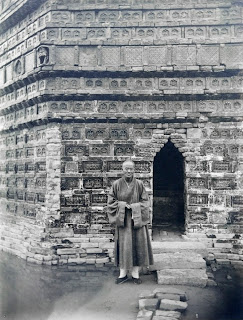The first seed catalog printed in America was not at all enticing from a 21st century sales perspective. The Catalogue of American Trees, Shrubs and Herbaceous Plants printed in 1783 by John Bartram Jr. (son of the famous American botanist John Bartram) was printed rather simply and without illustrations. Catalogs with more sales appeal came about in the middle to late nineteenth century including those crafted by Joseph Breck, James Vick, Dellon Dewey, J.C. Vaughn, Luther Burbank and W. Atlee Burpee. The horticulture and floriculture trades during this period experienced huge expansion due in part to both scientific advancements and the power of advertising.
 |
| Front and back of the 1902 Burpee catalog W. Atlee Burpee Company records Archives of American Gardens |
For more information on the history of seed catalogs, see the bibliography compiled by Marca Woodhams, former librarian of the Smithsonian Institution Libraries’ Horticulture branch (now part of Smithsonian’s Botany and Horticulture Library): http://www.sil.si.edu/SILPublications/seeds/bibseednur.html
The Archives of American Gardens includes the business records of a number of nurseries and seed companies that operated in the late nineteenth and early twentieth centuries including W. Atlee Burpee & Company (Pennsylvania), H. Weber & Sons (Maryland), and Bedman Brothers (New Jersey). Many of these collections include nursery and seed catalogs that showcase fine examples of the work of artists and illustrators. In addition, AAG’s J. Horace McFarland Collection features thousands of images that McFarland’s publishing firm, Mount Pleasant Press, used to illustrate the numerous seed catalogs it printed during the first half of the twentieth century.
--Kelly Crawford, Museum Specialist
Archives of American Gardens
Smithsonian Gardens























